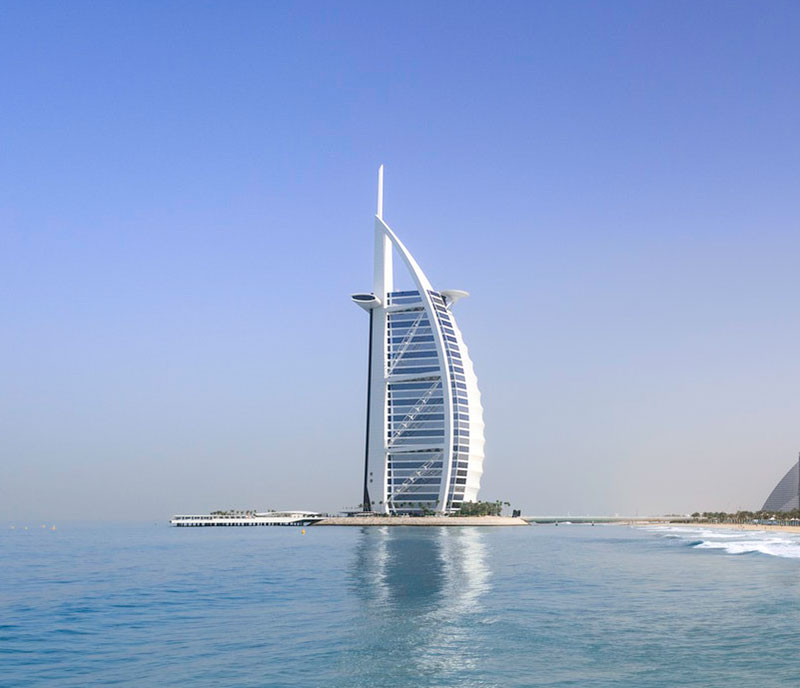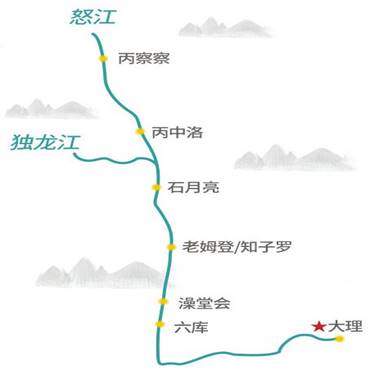Day01 Dali-Lushui-Laomudeng Village
Depart from Dali city, drive to Nujiang Grand Canyon, on the way pass Lushui, stay at Laomudeng Village.
Morning departs from Dali and drive to Nujiang Grand Canyon, we firstly drive to Lushui City which is the the capital city of Nujiang Lisu Autonomous Prefecture. The distance is 226km and it takes around 4 hours driving time. On the way you would pass Gaoligong Mountain, Biluo Snow Mountain, local markets, flying waterfalls, and Lisu Ethnic Villages.
After passing Lushui, we continue to drive 111km, 2.5 hours to Laomudeng Village from Lushui. Laomudeng is a 12km uphill ride on a good road from Pihe town. It's about 1800m elevation from the river. You would be thrilled by the excellent location - the amazing views over the mountains with the picturesque church and its pond as the centrepiece. By standing inside a remote village, with snow mountain surrounded and the voice of the flowing water, you would gain the peace in the nature. We would arrange you to taste Nu people's pilaf as dinner. In the evening you can visit a mountain-top church and listen to the local Nu people singing hymns in their beautiful voice. Stay overnight at 150 Guesthouse which runs by a local Lisu people.
Day02 Laomudeng Village – Bingzhongluo (B/L/--)
溜索的配图
Get up early and appreciate photogenic view and peaceful atmosphere inside the small village. After breakfast, we would firstly drive to visit Zhiziluo, the old capital city of Nujiang autonomous prefecture in 40 years ago. The new capital city was set in Lushui in 1970s and Zhiziluo became an abandoned city. It has been preserved very much as it was then - complete with 'red' slogans and Mao murals - it is now being developed as a centre for red tourism. Then drive to take an outside look of Stone Moon, a remarkable hole in a mountain through which you can see the sky winking back from the other side. After visiting the Stone Moon, we would passby the local travel item called Liusuo (Zipline). After all these years, villages on the other bank of the river are accessed by sliding on overhead cables that span the river. The cables are tied to trees on either side of the river and to cross, one is suspended from a rope loop attached to a harness worn around the waist. We would take a look of the local villagers how do they use this tool to pass the Nu River. Then drive to visit The First Turn of the Nujiang River. As the cut off of mountains, Nu River turns into a semicircle, and the water is green and clean in winter and spring. You can have a panoramic view on top of the viewing platform. After 20 mins driving, we would reach Bingzhongluo Town, you would reach a viewing platform to get a first glimpse of both Bingzhongluo and the other 'toe' of Biluo. You would see the clouds float around half sky of the town which makes the town looks more charming. Stay overnight at Gudaofang Guesthouse.
Day03 Bingzhongluo (B/L/--)
Zhongding Catholic Church, Stone Gate, Tea-Horse Road, Wuli Village, Qiunatong
Today we would firstly visit a 100-year-old Zhongding Catholic Church built and founded by a French missionary that located in Bingzhongluo Town. Then we drive to The ancient Tea Horse Trade Route, it is the only road to Wuli Village. We would park our car nearby, then walk around 1-1.5 hours to visit Wuli Village. By hiking on the tea-horse road, you can fell people centuries ago hollowed out a stunning trail in the cliff through which residents and caravans could pass. Then we would spend time in exploring the Wuli Village which has over 3 ethnic groups live inside it (Nu, Lisu and Tibetan). Stone Gate is another fantastic section of the gorge along with Wuli (also called Wengli), another stunning landscape lying on a beautiful slope along the river bank. Finally we would drive to visit Qiunatong Village. Qiunatong Village, the last village in Yunnan Province closed to the border between Yunnan and Tibet. The road from here leads directly into Tibet. Qiunatong is a Nu Village with about 200 people. After finish the sightseeing in Qiunatong, we would drive you back to stay overnight at Bingzhongluo Town.
Day04 Bingzhongluo – Dulongjiang (B/L/--)
Drive to Dulongjiang Town. Pukawang Village, Maku Village, Moon Falls and No.41 Boundary Marker between China and Myanmar.
Today we depart from Bingzhongluo after breakfast, we would firstly drive around 120km, 3.5 hours to Kongdang Township. Starting from Bingzhongluo, go west to reach Dulongjiang Township – you would have a thrilling but breathtaking experience by driving on this section. There are several viewing platforms along the way to enjoy the magnificent scenery and diverse plants of the Gaoligong Mountains. After lunch served at local restaurant or local farmer's house, we drive you to visit Moon Falls. On the way we would pass Pukawang Village and Maku Village which Durong Ethnic Groups people live inside. You would have chance to see the women with tattoo on their face. It said that there are only around 20 women left in Dulongjiang Township with such kinds of tattoo. The Moon Falls locates near the border between China and Myanmar. So you might have chance to take a look of the No.41 Boundary Marker between China and Myanmar which depends on the policy for foreigners. Drive back and stay overnight at the guesthouse of Pukawang Village.
Day05 Dulongjiang (B/L/--)
Kongdang Township, Longyuan Village, Dizhengdang Village, Xiongdang Village.
Today we would continue to spend one more day in exploring the upstream area of Dulongjiang River. There are many water drops along the way, and the river visibility is crystal blue from Nov till the end of Apr. There are minority tribes lining the valley with quite a bit of historical value. The beautiful landscape, primitive culture and simple people there, would make your adventure trip worthy. Overnight stay at Kongdang, where the township government.
Day06 Dulongjiang-Gonshan-Liuku (B/L/--)
Today we would drive from Dulongjiang to Gongshan County, from Gongshan to Liuku. After arriving Liuku, we would bring you to take a look of the local famous outdoor hotspring called Zaotanghui. The driving distance is 327km which takes around 8 hours driving time. Overnight stay at 4* Hilton Garden Inn Nujiang.
Day07 Liuku-Baoshan (B)
Drive from Liuku to Baoshan Airport (148km/3hours), take flight to leave from Baoshan airport.



 +86 139-7838-9069
+86 139-7838-9069 janet@chinaadventurespecialist.com
janet@chinaadventurespecialist.com